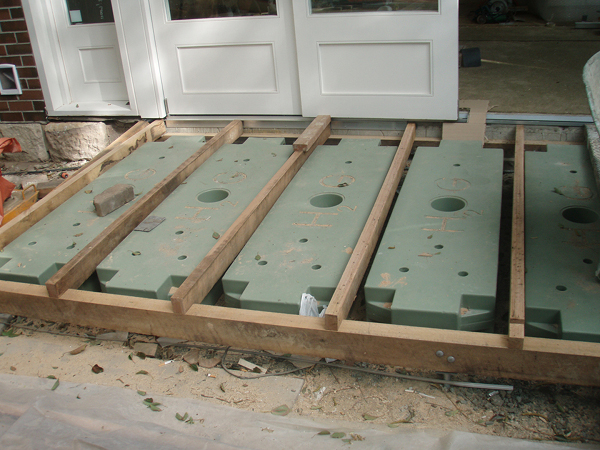When you’ve got your green building innovation installed in the backyard of U.S. Green Building Council founder David Gottfried, you know you’re doing something right. The innovation is the HOG rainwater harvesting system, and the inventor is Australian architect Sally Dominguez.
The American Institute of Architects (AIA) reports that the inspiration for Dominguez’s rainwater harvesting system came to her while working on residential infill projects in inner-city Sydney. The long-term water supply of this city, like so many Down Under, is far from secure — there is, after all, a reason that Australia is known worldwide as the front-runners in rainwater harvesting. But despite some innovative large-scale solutions the city has been exploring in recent years, she found that all of the rainwater storage systems available to the individual building owner at the time were designed for rural use. Due to their scale and shape — think wide, round steel tanks with storage capacity running upwards of 1,000 gallons — just weren’t appropriate for dense urban areas.


The first Rainwater HOG tank debuted in Australia back in 2005, at a time when rainwater was still considered gray water (i.e., used household water). Thus the name: H2O Grey, or H2OG, or HOG. Now a version of the tank manufactured in the U.S. is available to the U.S. market, where the system has gained widespread popularity among green builders and architects in recent years. (The Rainwater HOG is also catching on in the growing market for such systems in Singapore and Japan.)
Both Dominguez and Rainwater HOG are now based in San Francisco, where her system caught the eye of Jeff King, a local green-building contractor. He made use of Rainwater HOG tanks in a 3.5-foot-high crawlspace in the cellar of his own home. King notes that he could have used a traditional tank storage system, but he would have had to install it first, and then build around it. “The water HOGs gave us the flexibility to bring in the tanks at the appropriate time in the job, and they also gave us the flexibility to add to and subtract from the size of the system,” King told the AIA. “I knew I could do whatever I wanted to with the HOGs, as opposed to being committed to digging a giant hole for a 450-gallon tank.”